CastellArquato: journey into the Middle Ages
The region is Emilia-Romagna, the province Piacenza, the scenery that of the Val DArda, the village: CastellArquato. Having geolocated the destination of this adventure, we can set out to discover it. We immediately find ourselves immersed in a medieval movie set, in which the towers of the Visconti castle, the red bricks of the palaces, the arches and ogival windows, the cobbled pavement of the alleys stand out. It was precisely the Middle Ages that was the golden age of CastellArquato, when it became a podesteria of the Commune of Piacenza first and Signoria later, under the leadership of the Scotti family, allies of the Visconti.
From this period, 13th century, still visible in the historic center are the Palace of Justice, the nucleus of what was to become the Duke’s palace, and the Palace of the Podestà , which overlooks the village’s main square. To the thirteenth-century brick part of the building were added in the fifteenth century the staircase and external canopy. Surmounting the Loggia dei Notari, now home to the Tourist Information Office, is a small loggia known as “delle grida” because municipal edicts were proclaimed from here. The Palazzo del Podestà today often hosts exhibitions, and inside you can see the large painted coffered ceiling.
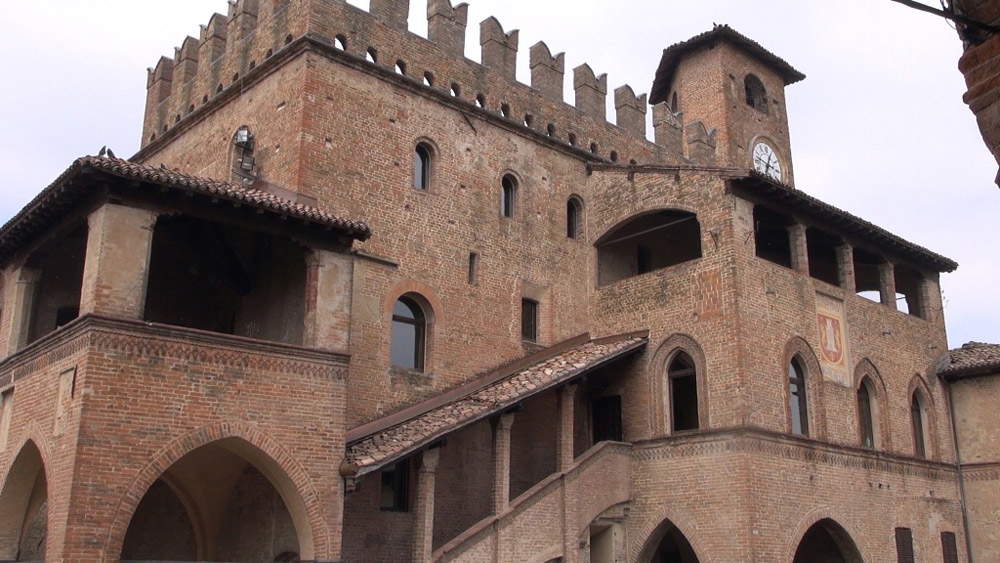 |
| Castell’Arquato, Palace of the Podesta |
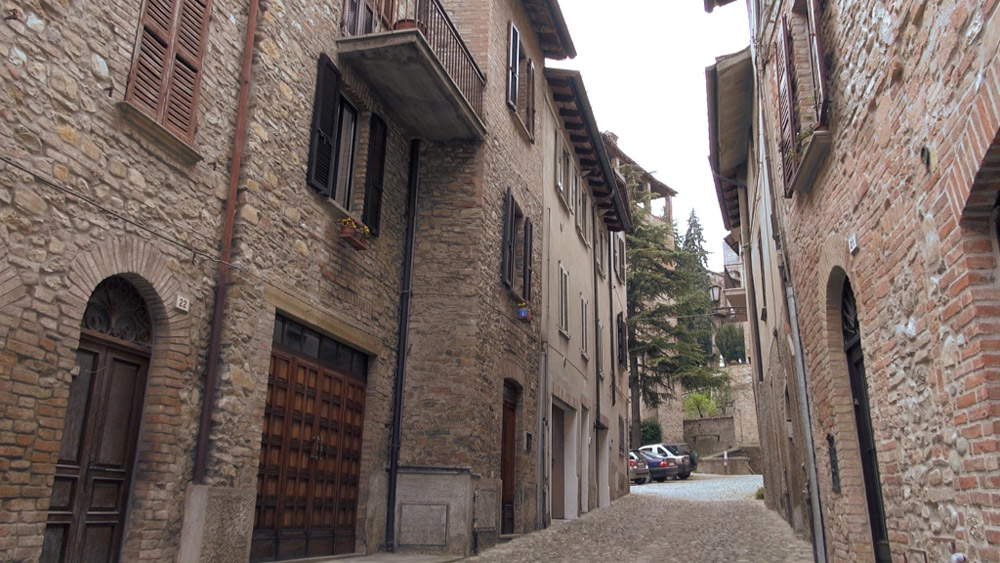 |
| A street in the village of Castell’Arquato |
Dating back to the 8th century is the collegiate church of Santa Maria, whose apses border the Town Hall square; facing the Palazzo del Podestà , on the other hand, is the Romanesque “portico of Paradise” from the second half of the 14th century. The sandstone façade, with a salient profile, overlooks a small square, but probably until the mid-14th century it must have been the village’s main square before the urban layout was changed with the construction of the castle. The fortress was in fact built by the Visconti family in 1342 as the seat of the military garrison and consists of a quadrangular plan with four towers and a keep, surrounded by a moat furrowed by two entrances. The fortress, recognizable even from afar in its silhouette overlooking the hill on which the village is placed, now houses the museum of medieval life. It was also chosen along with other important castles in the Piacentino area and southern France as the setting for the film Ladyhawke, as well as the backdrop for a number of commercials and outdoor theater performances.
Finally, two other buildings that mark the medieval profile of the city are the Torrione Farnese, a sort of outpost against enemy armies, and the Palazzo del Duca, in the 17th century the residence of the Sforza Dukes. At the base of the palace is the Duke’s fountain with eight zoomorphic bronze mouths. A washhouse was located here where women could bathe their children and wash their laundry, while it was forbidden to bring animals to drink so as not to disfigure the purity of the water.
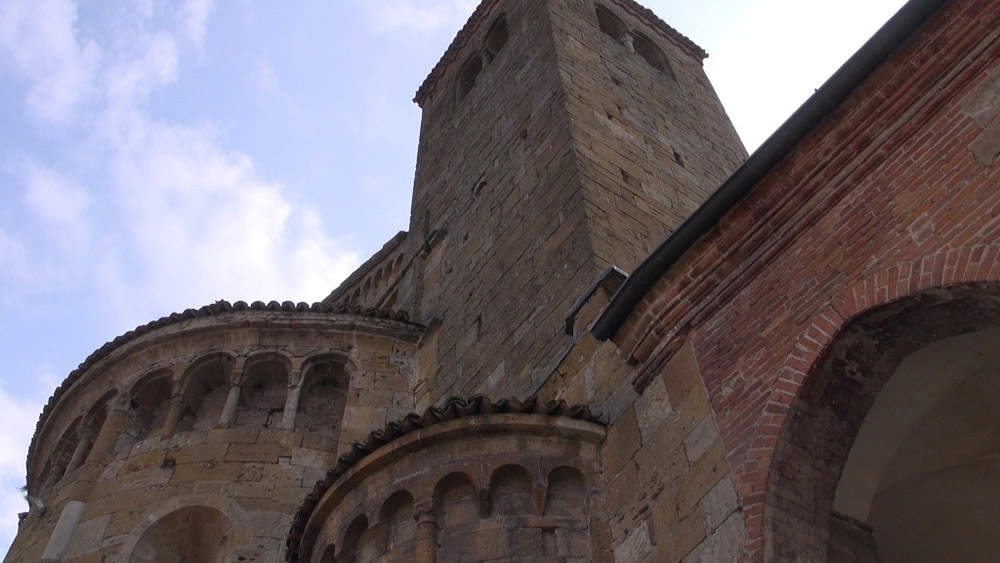 |
| The apses of the Collegiate Church |
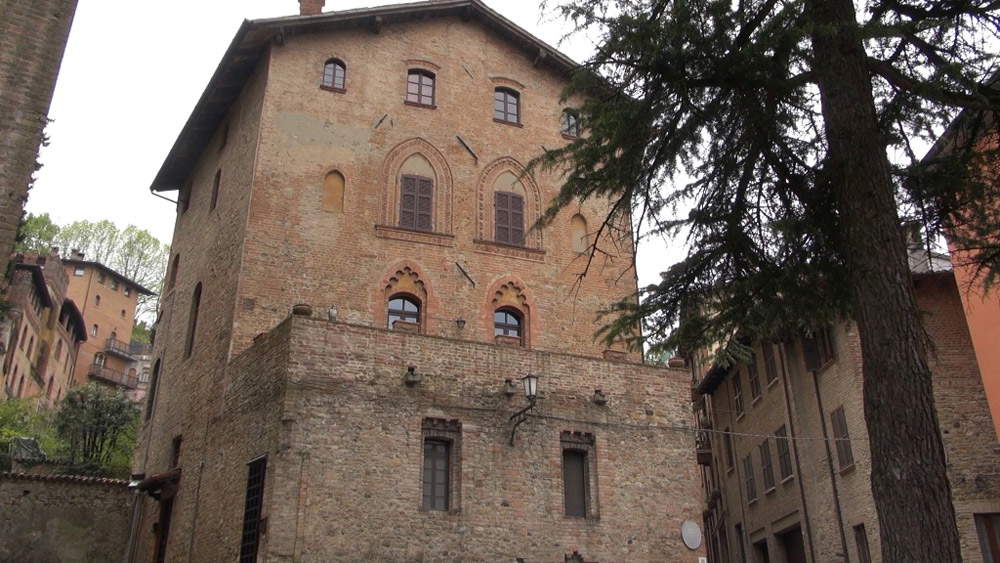 |
| The Duke’s Palace |
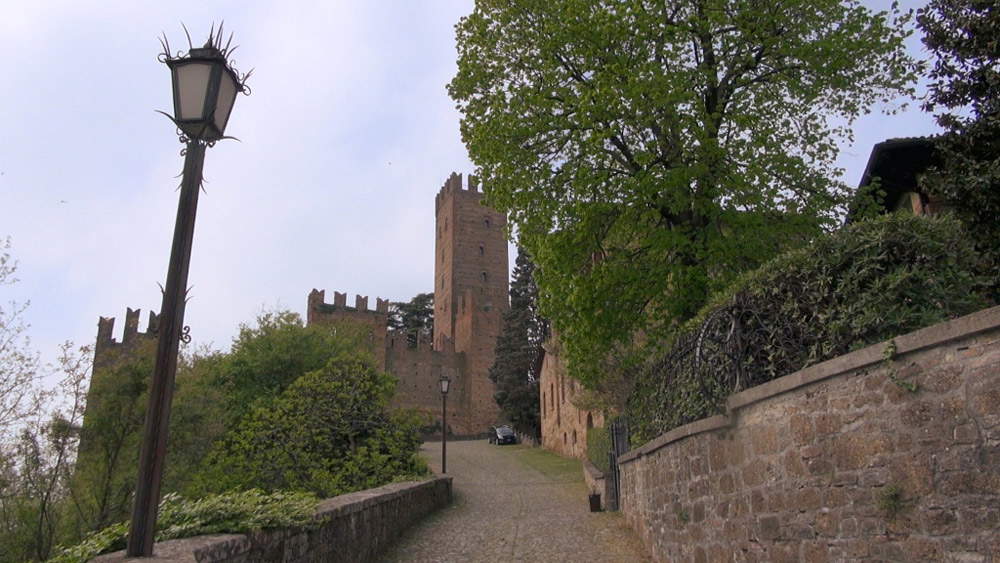 |
| The Rocca Viscontea |
To conclude, I point out the ancient Ospitale di Santo Spirito, one of the shelters that received pilgrims in transit on the Via Francigena, which today houses the collections of the G. Cortesi Geological Museum. Let this be just a cue for a visit to the villages of the Piacenza area where you can find calm, tranquility, enjoy delicious cured meats, excellent wines and enrich your cultural baggage among Città darte, Bandiere Arancioni and Borghi più belli d’Italia. Once again, enjoy your trip!
Warning: the translation into English of the original Italian article was created using automatic tools. We undertake to review all articles, but we do not guarantee the total absence of inaccuracies in the translation due to the program. You can find the original by clicking on the ITA button. If you find any mistake,please contact us.





























